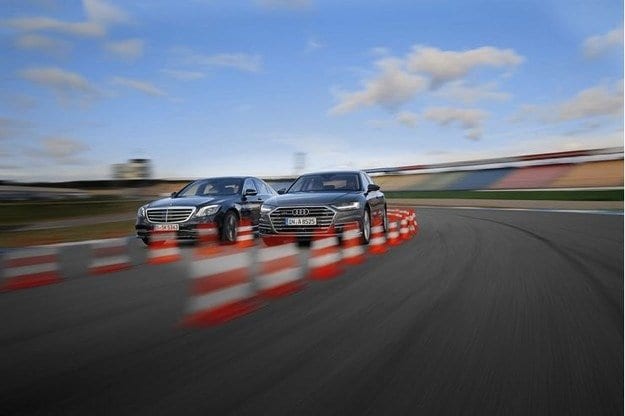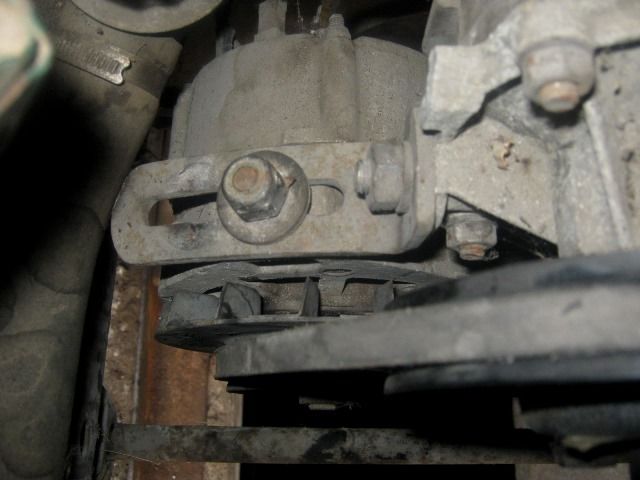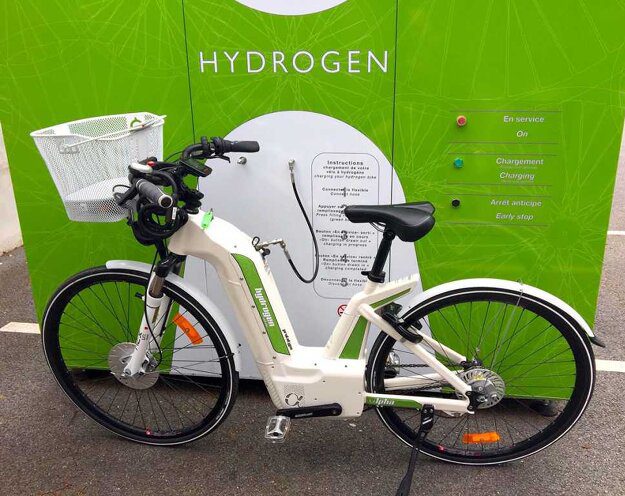
Test drive Audi A8 vs Mercedes S-Class: luxury diesel

It's time to compare the two most famous luxury limousines in the world.
Against the background of his opponent, he is young. The A8 is only in its fourth generation and has been around for only a quarter of a century. This does not prevent him from unceremoniously throwing the glove at the S-Class. The arrogance based on the high rating of the S 350 d should be humble in front of the A8 50 TDI.
They are royalty. They radiate dignity, greatness, admiration and envy. Whoever appears on their show, whatever role they play, will have to consider their presence. Automotive standards of luxury and technology of the highest class. They are the Audi A8 and the Mercedes S-class. Before we start, however, we need to clarify why the two cars sit side-by-side and what are the reasons for the high claims rating.
In fact, Mercedes has long earned this right. Since the days of the Kaisers, the brand has stood for wealth, beauty, technology and power – all of which apply to the current S-Class. At Audi, things are a little different. The company entered this promised territory only in 1994 and entered the world of luxury with the help of “progress through technology”. In its new fourth generation, the A8 vividly expresses this philosophy with avant-garde solutions.
From tradition to revolution
Evidence of this is unlikely to be found in design, although this is not entirely true, because such a vision requires great technological mastery. However, the real revolution remains hidden under the veil. The famous aluminum body structure, dubbed the first generation Space Frame, has given way to a raw body made from a smart mix of different materials such as aluminum and magnesium alloys, various types of steel and, of course, the better-known carbon-reinforced polymers. like carbon. The new architecture has a 24% higher torsional resistance, but retains Space Frame's main advantage of light weight. Thus, Audi continues to follow the vision of the first generation - to produce the lightest luxury sedan. Despite weighing only 14 kg, the A8 50 TDI Quattro is lighter than the S 350 d 4Matic.
But the A8 already has a tradition of setting new goals. Initially the lightest limousine, then the sportiest and now the most innovative. For this reason, our comparison test does not start on the road, but between the pillars and under the neon lights of our underground garage. There are so many settings to be made with the A8 that it takes time to set them up before you start.
First you need to get used to the lack of a rotary control in the MMI system - in fact, the loss is quite tolerable. However, the fact that it was abandoned and replaced by something else is not in itself a reason to argue that the new control architecture is better. It is certainly a fact that when the vehicle is stopped, the menus of the two superimposed touch screens can be navigated remarkably quickly and intuitively. When touched, the display lowers slightly and responds to movement with an impulse to confirm the set command, and a slight click is heard in the column. What time has come - it takes such a complex digital transformation to achieve something so analog? The previous heavy metal regulator gave the impression of being as solid as if a car could serve as an investment. This can no longer happen after even the setting of the air conditioning system tries to "twist your finger" with its little touches and sliding surfaces. In a static position, this is still possible, but while driving, managing a huge range of functions through numerous menus is distracting. Audi's claims that a new way of driving means a new user experience may be true. However, real progress will only be made if everything in management is streamlined, with priority given to the most important thing that you will have to regulate - that is, if what matters is chosen, instead of accumulating all available options.
Unfortunately, things aren't more intuitive when interacting with the S-Class, with sliding steering wheel buttons for on-board computer control, assistance and navigation, a cumbersome combination of rotary and push controls, and a small touch surface. This suggests that it is time to hit the start button. He breathed life into the inline-six diesel unit that the car received during the summer facelift. The basis of its power is expressed in a torque of 600 Nm, which the machine reaches at 1200 rpm. It doesn't like high revs even for diesel engines and even at 3400 rpm it already has a maximum 286 hp. Instead, it fills you with thrust from idle and responds powerfully when the throttle is in perfect harmony with the automatic transmission, which runs through its nine gears with silky softness. It is in tune with everything that the S-Class radiates and offers with dignity, including the position of the driver, who stands high enough to see the flared hood topped with a three-pointed star, as if he wants to soar in space. Comfort is taken care of by the air suspension, which protects passengers from impacts and limits body vibrations. In this, the S-Class is a class in itself.
We shouldn't be surprised that this Mercedes has no serious ambitions for dynamic handling. We are not surprised that it makes directional changes with ease, but in its pursuit of maximum safety on the road, it does so without much ambition for precision with indirect steering.
Cabin space is adequate but not entirely up to expectations, materials and workmanship are high but not exceptional, brakes are powerful but not as uncompromising as Audi's, the engine is efficient but not super-efficient – In practice, there are several areas in which the S- The class shows its age. This even applies to the equipment with driver assistance systems, which is not as extensive as that of Audi, and at the same time does not demonstrate the same degree of reliability: during a test drive, the active lane change assistant wanted to push the Corsa - not really. we introduce ourselves under the ironic term "built-in advantage" for a Mercedes owner.
A8 also uses electricity
Audi is driven primarily by the pursuit of excellence. To further improve drive efficiency, the V6 TDI engine is combined with a 48-volt mild hybrid system. The latter has no ambition to add dynamics to the internal combustion engine, which itself develops its 600 Nm, respectively 286 hp. Of course, not without a spirited eight-speed gearbox that responds faster than Mercedes' gearbox.
The 48-volt system includes a 10-amp lithium-ion battery and a belt starter-alternator. It provides power to all systems when the engine is not running - for example, in "hover" mode, which can last up to 40 seconds when driving at speeds from 55 to 160 km / h, or when it turns off when approached. at the traffic light. This potential is shown in the fuel consumption in the test of 7,6 l/100 km - a remarkably low level even against the background of a not particularly high average consumption of 8,0 l/100 km on the S 350 d.
Audi has another trump card - the AI chassis is available as an accessory, in which additional force is transferred to the suspension of each wheel with an electromechanical device that compensates for tilt when turning or stopping, as well as in case of danger. in a side impact, the car is lifted to the side by eight centimeters, so that the impact energy is absorbed by the harder lower body. The test sample was equipped with a standard chassis, which, like the Mercedes, includes air suspension. However, the A8's settings are tighter, with bumps getting tighter, but body control is more precise - in each of the modes, between which there is no significant difference. The A8 stays true to itself and leaves the S-Class free to pamper its passengers even more.
Like its colleague in the Porsche Panamera concern, with which it shares a platform, the Audi A8 has a four-wheel steering system. In the name of stable behavior during dynamic cornering and when changing lanes on the highway, the rear wheels steer parallel to the front wheels. On tight turns, they rotate in the opposite direction, which improves handling and maneuverability. All this is felt - also thanks to good visibility - when driving on a secondary road, when it does not seem that a car weighing 2,1 tons and an area of 10,1 square meters has driven onto the crest of the mountain.
Instead, the A8 feels much more compact, maintains a neutral demeanor, moves quickly, is extremely safe and confident. Incredible traction is also provided by the all-wheel drive system, which transfers 60 percent of the torque to the rear axle during normal driving. Steering feedback is also on top - especially against the background of the previous model, which was rather incomprehensible. Now the A8 makes clear statements, but doesn't analyze every bit of asphalt.
Special mention should be made of the brilliant LED lighting in the S-Class and the comprehensive equipment with support systems. However, sometimes even mature systems like the one that monitors the tape are turned off, and in the crowded flickering of digital indicators, this indication can easily go unnoticed.
These are just little things. However, it is true that this is exactly what they are talking about when they claim to produce the most innovative luxury limousine. Does the A8 meet these requirements? He beats the confident S-class. But the very essence of perfection is that it is unattainable. Whatever the effort you put in.
CONCLUSION
1 Audi
The perfect limousine? Audi does not want to be anything less and showcases everything that can currently be offered as assistance, offers a lot of luxury and handling. Victory is calculated in advance.
2. Mercedes
The perfect S-class? It does not want to be smaller and surpasses the rival in suspension comfort. Driving lag may leave us unmoved, but this does not apply to safety equipment and brakes.
Text: Sebastian Renz
Photo: Hans-Dieter Zeifert

